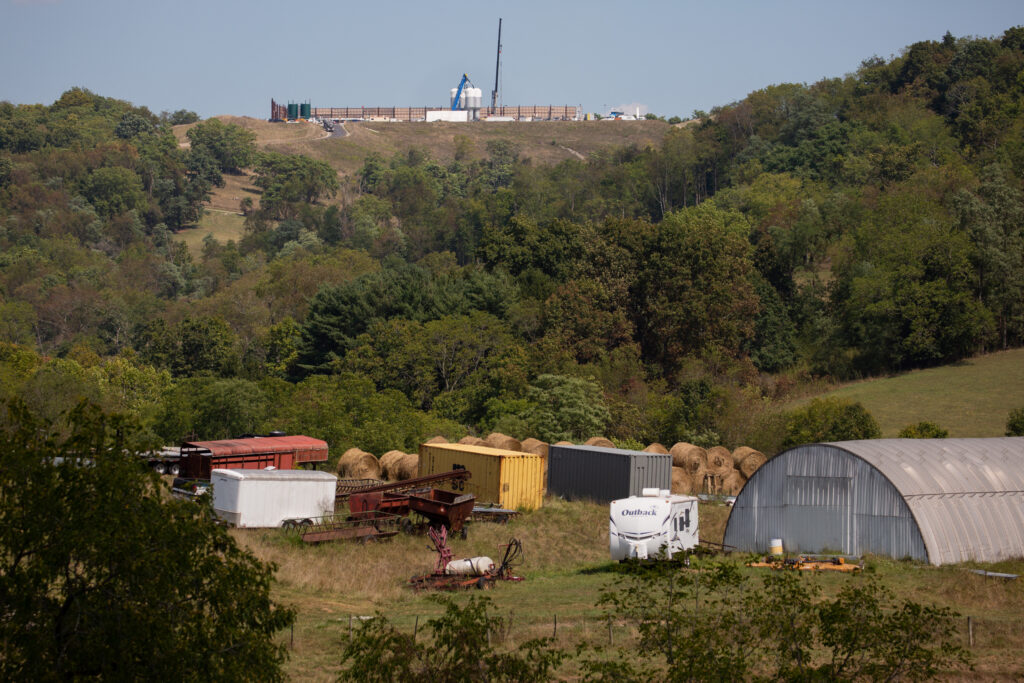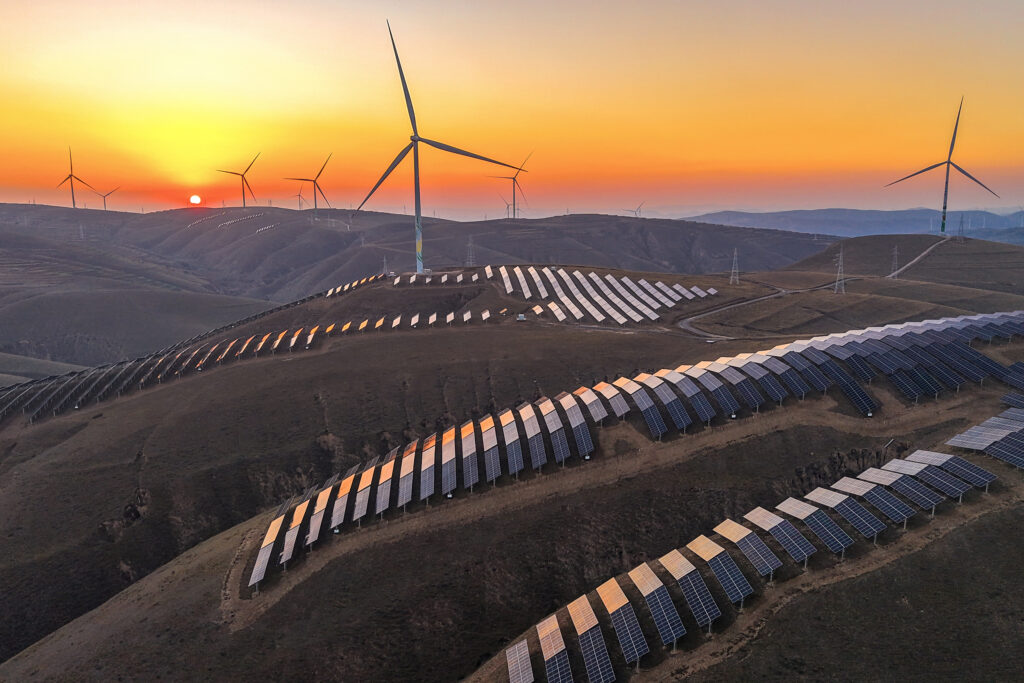One of the challenges in understanding the U.S. energy transition is that the circumstances are different in every state. Some, such as Vermont, have progressed far down the road away from fossil fuels, while others, such as Kentucky and West Virginia, might as well be decades in the past.
Last week, I wrote about national trends in electricity generation and Texas’ dominance in renewable energy, based on recently released data from the Energy Information Administration. In 2024, utility-scale solar and wind were up nationwide, while coal was down and other major sources had little change.
We’re hiring!
Please take a look at the new openings in our newsroom.
See jobs
Today, I’m using some of this same data to look at the 50 states, plus the District of Columbia, with the assistance of Paul Horn, Inside Climate News’ maestro of infographics.
Let’s start with fossil fuels.
Texas leads the country in electricity generation from fossil fuels, and nobody else is close. The state ranks No.1 on natural gas and coal and also generates some electricity from burning petroleum liquids. The total from the three fuels in 2024 was 356,144 gigawatt-hours.

The rest of the top 10 states for fossil fuel generation are mainly in the South (Alabama, Florida, Georgia and Louisiana) or Midwest (Indiana, Michigan and Ohio). The two others are Pennsylvania, which sits on the Marcellus Shale, the country’s largest gas field, and California, which, despite having policies that embrace renewable energy, still depends a lot on natural gas.
Kentucky and West Virginia, both of which have a legacy of coal mining, rely the most on fossil fuels in percentage terms, getting more than 90 percent of their electricity from burning coal, gas and petroleum liquids.
The third member of this 90 percent club may surprise you. It’s Delaware, which has state policies calling for a shift to net-zero emissions but still generates most of its power by burning gas.
Hawaii and Alaska stand out from the rest because of their reliance on burning petroleum liquids. Hawaii has state policies to move to renewable electricity, while Alaska shows little desire to make changes.
Next, let’s look at electricity from renewables, which I’m displaying as two categories— hydropower and “other”—to show the importance of hydropower in some states.
Hydropower is generated by the flow of water through a turbine at a dam, and it is second only to wind among the leading sources of renewable energy. “Other” is mostly wind and utility-scale solar, with small amounts of geothermal and biomass.
Texas leads in renewable energy despite having almost no hydropower. The state ranks No. 1 in wind energy generation and is a close second to California in utility-scale solar.
No state comes close to Washington in hydropower. Its 60,456 gigawatt-hours of hydropower last year were about double the runner-up, California.


Vermont has the highest share of electricity generation from hydropower, with 60 percent, a fraction of a percentage point more than Washington. Next is Idaho with 45 percent.
The main benefit of hydropower for the grid is its steadiness, with an ability to run around the clock. But it is vulnerable to drought and other factors that can reduce water flows, leading to small variations in electricity output.
Looking at the top 10 states in renewables, seven are leaders in wind power and located in a cluster of wind-rich states from Iowa to Texas. Two states—Washington and New York—get most of their renewable electricity from hydropower. California gets most of its renewable electricity from solar.
Now, let’s stack nuclear power on top of renewables. While nuclear power is not renewable, governments and energy industry pros usually describe it as “carbon-free” because it doesn’t release carbon when producing electricity. (The caveat here is that all forms of electricity have at least some emissions when viewed on a lifecycle basis, which includes the energy used to make the components and continues until disposal at the end of life.)


The national leader in carbon-free electricity should be no surprise at this point. It’s Texas, thanks to a huge lead in renewables, followed by California.
Illinois ranks third thanks to generating more electricity from nuclear than any other state, followed by Pennsylvania, which ranks second in nuclear generation. New Hampshire gets the highest share of its electricity from nuclear, with 56 percent, followed by South Carolina, with 54 percent, and Illinois, with 53 percent.
This story is funded by readers like you.
Our nonprofit newsroom provides award-winning climate coverage free of charge and advertising. We rely on donations from readers like you to keep going. Please donate now to support our work.
Donate Now
The last and largest of the charts shows the electricity mix of each state in percentage terms. I could study this all day.
Seriously, get a cup of coffee and spend some time with this one.
You can see the contrasts between states, which are tied to variations in natural resources, policies and investment decisions.


President Donald Trump’s administration is taking actions to increase the use of fossil fuels and nuclear, and has shown hostility toward renewables. But looking at the graphic above, it’s evident that states have tremendous leeway to chart their own courses.
For example, decades of federal policies to subsidize renewable energy have resulted in little development in West Virginia. And if you’re betting that fossil fuels are about to make a comeback in Vermont, you’re probably wrong.
That said, there are areas of policy where the federal government can slow down the energy transition, such as Trump’s executive order halting offshore wind permits.
The larger point is that any discussion about a national shift in how we generate electricity needs to acknowledge where each state is today, and what next steps make the most sense.
Other stories about the energy transition to take note of this week:
Solar and Batteries Accounted for the Large Majority of New Power Capacity Installed in 2024: Solar and energy storage were 84 percent of new electricity generation capacity in the U.S. grid last year, according to the Solar Energy Industries Association and Wood Mackenzie. The 50 gigawatts of new solar capacity last year were the most of any single technology to be installed in more than two decades, as Gnaneshwar Rajan and Nichola Groom report for Reuters. The solar trade group released these numbers as part of a report that raises concerns about the country’s ability to maintain robust growth in renewable energy under Trump.
Trump Turns Into a Car Salesman for Tesla: Trump held an unusual event this week in the White House driveway, promoting Tesla’s vehicle lineup alongside the automaker’s CEO, Elon Musk. Trump was responding to protests at Tesla dealerships from people who oppose Musk for his job-slashing role as the head of the Department of Government Efficiency. But this odd promotion by the president is unlikely to help Tesla and could end up worsening the brand’s reputation, as Bernard Condon reports for The Associated Press.
Canada Battles Trump Over Energy Tariffs: Trump’s fondness for tariffs is reverberating across the energy economy, and the policies are going through rapid changes to the point that it’s difficult to say much without it being immediately out of date. One thing we can say, as of Wednesday afternoon, is that retaliatory tariffs from Ontario on electricity exports have led the Trump administration to reverse some of its tariff threats and agree to trade talks, as David Goldman and Elisabeth Buchwald report for CNN. Canada and the United States have grid connections and a history of buying and selling electricity across the border, so any tariffs would have a harmful effect on U.S. consumers.
Some Republicans Defend Clean Energy Tax Credits From Cuts: One of the big questions about the Trump administration’s push to repeal much of the Biden administration’s energy policies is whether Republicans would step up to defend the aspects of those policies that are helping their constituents. There was fresh evidence this week of at least some pushback as 21 Republican members of the House of Representatives signed a letter warning of economic harm if the tax credits from the 2022 Inflation Reduction Act are canceled, as my colleagues Dylan Baddour and Marianne Lavelle report.
Inside Clean Energy is ICN’s weekly bulletin of news and analysis about the energy transition. Send news tips and questions to [email protected].
About This Story
Perhaps you noticed: This story, like all the news we publish, is free to read. That’s because Inside Climate News is a 501c3 nonprofit organization. We do not charge a subscription fee, lock our news behind a paywall, or clutter our website with ads. We make our news on climate and the environment freely available to you and anyone who wants it.
That’s not all. We also share our news for free with scores of other media organizations around the country. Many of them can’t afford to do environmental journalism of their own. We’ve built bureaus from coast to coast to report local stories, collaborate with local newsrooms and co-publish articles so that this vital work is shared as widely as possible.
Two of us launched ICN in 2007. Six years later we earned a Pulitzer Prize for National Reporting, and now we run the oldest and largest dedicated climate newsroom in the nation. We tell the story in all its complexity. We hold polluters accountable. We expose environmental injustice. We debunk misinformation. We scrutinize solutions and inspire action.
Donations from readers like you fund every aspect of what we do. If you don’t already, will you support our ongoing work, our reporting on the biggest crisis facing our planet, and help us reach even more readers in more places?
Please take a moment to make a tax-deductible donation. Every one of them makes a difference.
Thank you,

















